AI-Generated Face Image Identification with Different Color Space Channel Combinations
Abstract
1. Introduction
2. Related Works
3. Classification of Neural Network and Attention Mechanism Selection
3.1. Classification of Neural Network Selection
3.2. Attention Mechanism Selection
4. Deep-Network-Generated Face Image Identification Scheme Design
4.1. Deep-Network-Generated Face Dataset
4.2. Color Space Channel Processing
4.3. Xception Model Optimization
4.4. Image Channel Recombination
5. Results
5.1. Deep Learning Network Model Test
5.2. Attentional Mechanisms and Image Channel Preprocessing Ablation Experiments
5.3. Comparison of Methods
5.4. Robustness Testing
6. Discussion
7. Conclusions
Author Contributions
Funding
Data Availability Statement
Conflicts of Interest
References
- Kingma, D.P.; Welling, M. Auto-encoding variational bayes. arXiv 2013, arXiv:1312.6114. [Google Scholar]
- Van Oord, A.; Kalchbrenner, N.; Kavukcuoglu, K. Pixel recurrent neural networks. In Proceedings of the International Conference on Machine Learning 2016, New York, NY, USA, 19–26 June 2016; pp. 1747–1756. [Google Scholar]
- Goodfellow, I.; Pouget-Abadie, J.; Mirza, M.; Xu, B.; Warde-Farley, D.; Ozair, S.; Courville, A.; Bengio, Y. Generative adversarial nets. Adv. Neural Inf. Process. Syst. 2014, 63, 2672–2680. [Google Scholar]
- Radford, A.; Metz, L.; Chintala, S. Unsupervised representation learning with deep convolutional generative adversarial networks. arXiv 2015, arXiv:1511.06434. [Google Scholar]
- Karras, T.; Laine, S.; Aila, T. A style-based generator architecture for generative adversarial networks. In Proceedings of the IEEE/CVF Conference on Computer Vision and Pattern Recognition, New Orleans, LO, USA, 21–24 June 2019; pp. 4401–4410. [Google Scholar]
- Karras, T.; Aila, T.; Laine, S.; Lehtinen, J. Progressive growing of gans for improved quality, stability, and variation. arXiv 2017, arXiv:1710.10196. [Google Scholar]
- McCloskey, S.; Albright, M. Detecting Gan-generated imagery using saturation cues. In Proceedings of the IEEE International Conference on Image Processing (ICIP) 2019, Bordeaux, France, 16–19 October 2019; pp. 4584–4588. [Google Scholar]
- Matern, F.; Riess, C.; Stamminger, M. Exploiting visual artifacts to expose deepfakes and face manipulations. In Proceedings of the Winter Applications of Computer Vision Workshops (WACVW) 2019, Seoul, Korea, 27 October–2 November 2019; pp. 83–92. [Google Scholar]
- Zhang, X.; Karaman, S.; Chang, S.F. Detecting and simulating artifacts in GAN fake images. In Proceedings of the IEEE International Workshop on Information Forensics and Security 2019, Delft, The Netherlands, 9–12 December 2019; pp. 1–7. [Google Scholar]
- Mo, H.; Chen, B.; Luo, W. Fake faces identification via convolutional neural network. In Proceedings of the 6th ACM Workshop on Information Hiding and Multimedia Security 2018, Innsbruck, Austria, 20–22 June 2018; pp. 43–47. [Google Scholar]
- Minh Dang, L.; Ibrahim Hassan, S.; Im, S.; Lee, J.; Lee, S.; Moon, H. Deep Learning Based Computer Generated Face Identification Using Convolutional Neural Network. Appl. Sci. 2018, 8, 2610. [Google Scholar] [CrossRef]
- Nataraj, L.; Mohammed, T.M.; Manjunath, B.S.; Chandrasekaran, S.; Flenner, A.; Bappy, J.H. Detecting GAN generated Fake Images using Co-occurrence Matrice. Electron. Imaging 2019, 2019, 532-1–532-7. [Google Scholar] [CrossRef]
- Hsu, C.C.; Zhuang, Y.X.; Lee, C.Y. Deep fake image detection based on pairwise learning. Appl. Sci. 2020, 10, 370. [Google Scholar] [CrossRef]
- Huang, G.; Liu, Z.; Van Der Maaten, L. Densely connected convolutional networks. In Proceedings of the IEEE Conference on Computer Vision and Pattern Recognition 2017, Honolulu, HI, USA, 21–26 July 2017; pp. 4700–4708. [Google Scholar]
- Zhuang, Y.X.; Hsu, C.C. Detecting generated image based on a coupled network with two-step pairwise learning. In Proceedings of the IEEE International Conference on Image Processing (ICIP) 2019, Taipei, Taiwan, 22–29 September 2019; pp. 3212–3216. [Google Scholar]
- Carvalho, T.; De Rezende, E.R.S.; Alves, M.T.P. Exposing computer generated images by eye’s region classification via transfer learning of VGG19. In Proceedings of the 16th IEEE International Conference on Machine Learning and Applications (ICMLA) 2017, Cancun, Mexico, 18–21 December 2017; pp. 866–870. [Google Scholar]
- Simonyan, K.; Zisserman, A. Very deep convolutional networks for large-scale image recognition. arXiv 2014, arXiv:1409.1556. [Google Scholar]
- Hu, J.; Shen, L.; Sun, G. Squeeze-and-excitation networks. In Proceedings of the IEEE Conference on Computer Vision and Pattern Recognition 2018, Salt Lake City, UT, USA, 18–23 June 2018; pp. 7132–7141. [Google Scholar]
- Chollet, F. Xception: Deep learning with depthwise separable convolutions. In Proceedings of the IEEE Conference on Computer Vision and Pattern Recognition 2017, Honolulu, HI, USA, 21–26 July 2017; pp. 1251–1258. [Google Scholar]
- Bianco, S.; Cadene, R.; Celona, L.; Napoletano, P. Benchmark Analysis of Representative Deep Neural Network Architectures. IEEE Access 2018, 6, 64270–64277. [Google Scholar] [CrossRef]
- Marra, F.; Gragnaniello, D.; Cozzolino, D.; Verdoliva, L. Detection of GAN-generated Fake Images over Social Networks. In Proceedings of the IEEE Conference on Multimedia Information Processing and Retrieval 2018, Miami, FL, USA, 10–12 April 2018; pp. 384–389. [Google Scholar]
- Woo, S.; Park, J.; Lee, J.Y. Cbam: Convolutional block attention module. In Proceedings of the European conference on computer vision (ECCV) 2018, Munich, Germany, 8–14 September 2018; pp. 3–19. [Google Scholar]
- Liu, R.; Tan, W. Eqface: A simple explicit quality network for face recognition. In Proceedings of the IEEE/CVF Conference on Computer Vision and Pattern Recognition, Nashville, TN, USA, 20–25 June 2021; pp. 1482–1490. [Google Scholar]
- Krizhevsky, A.; Sutskever, I.; Hinton, G.E. ImageNet classification with deep convolutional neural networks. In Proceedings of the Advances in Neural Information Processing Systems (NIPS) 2012, Lake Tahoe, NV, USA, 3–6 December 2012; pp. 1097–1105. [Google Scholar]
- He, K.; Zhang, X.; Ren, S.; Sun, J. Deep Residual Learning for Image Recognition. In Proceedings of the IEEE Conference on Computer Vision and Pattern Recognition 2016, Las Vegas, NV, USA, 26 June–1 July 2016; pp. 770–778. [Google Scholar]
- Li, H.; Li, B.; Tan, S.; Huang, J. Identification of deep network generated images using disparities in color components. Signal Process. 2020, 174, 107616. [Google Scholar] [CrossRef]
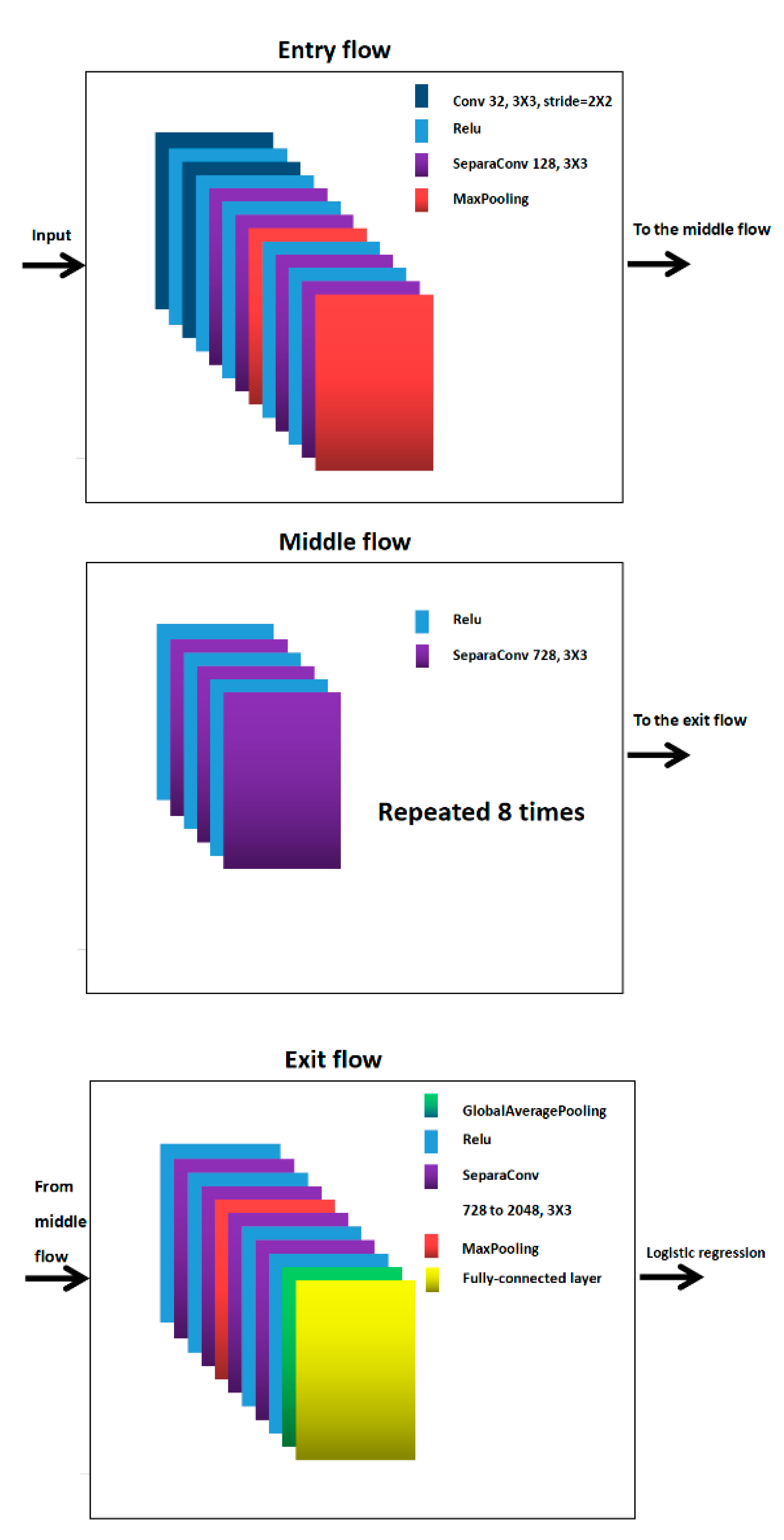
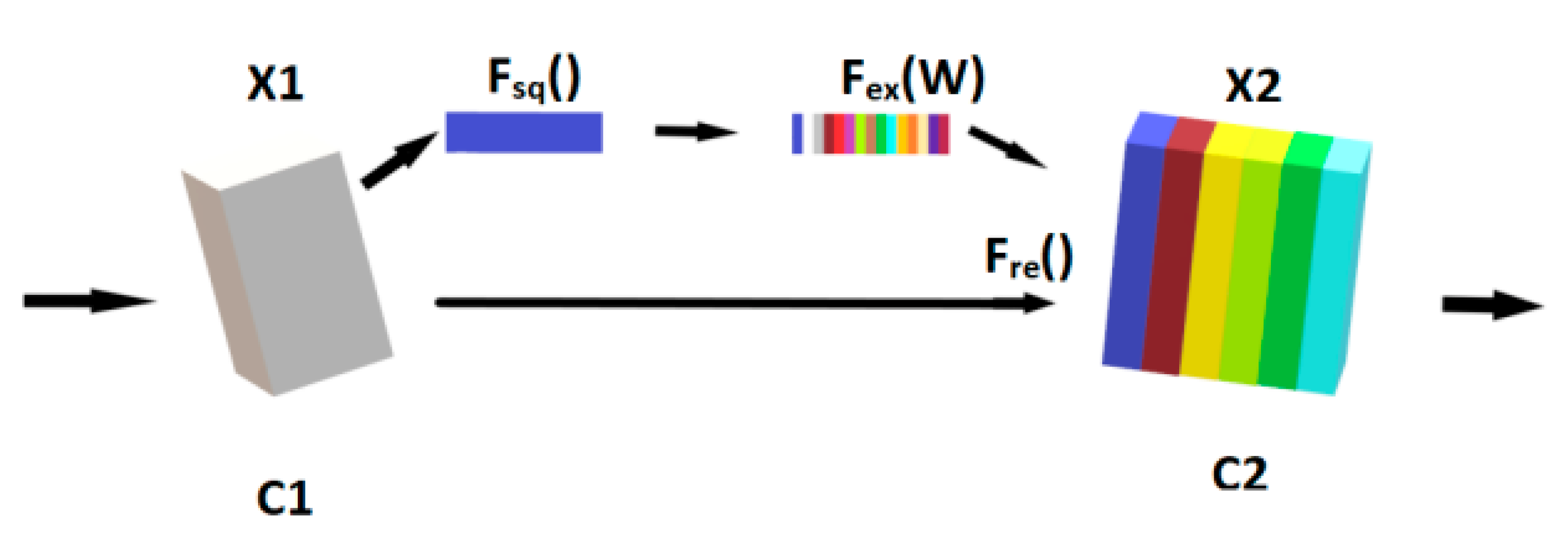


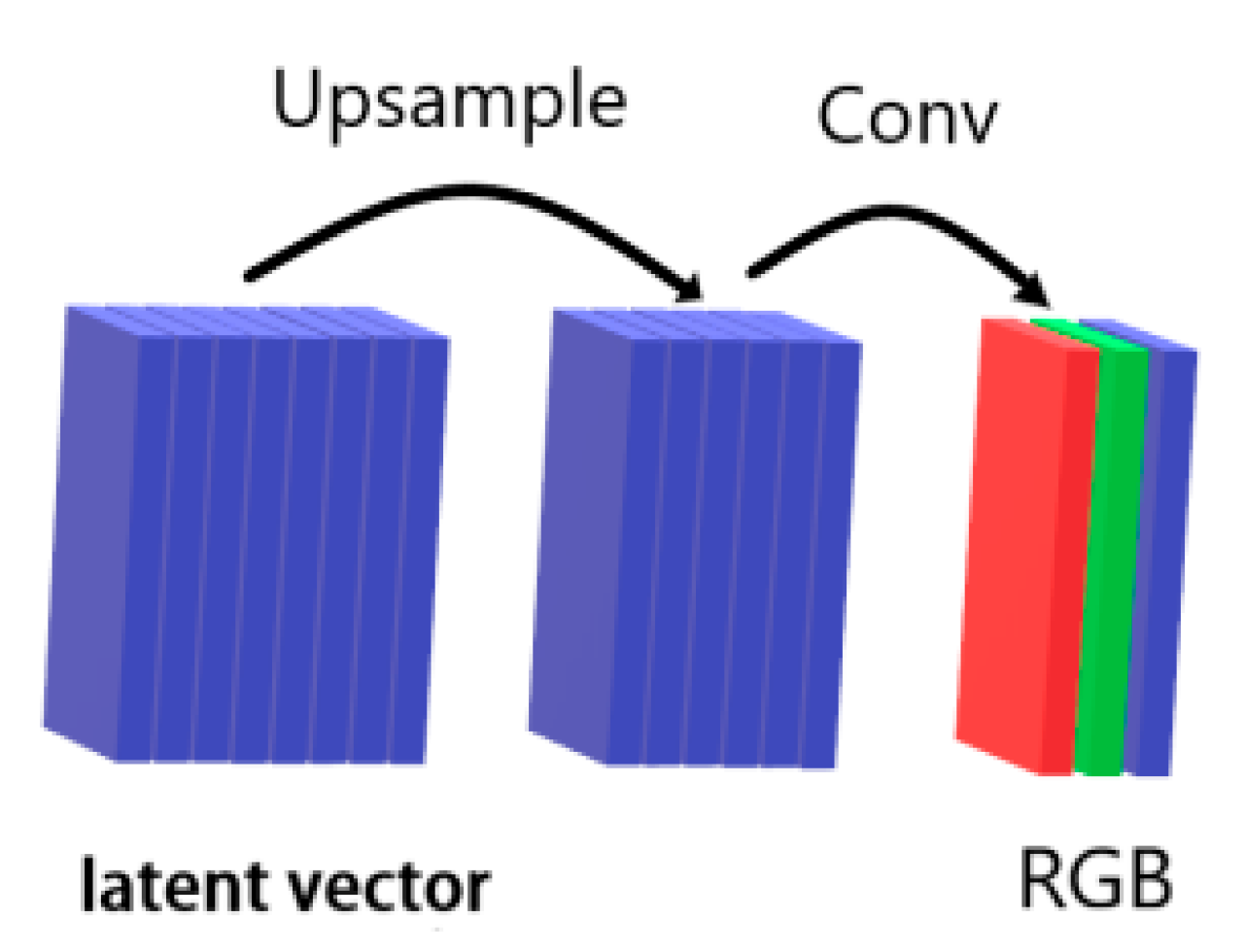
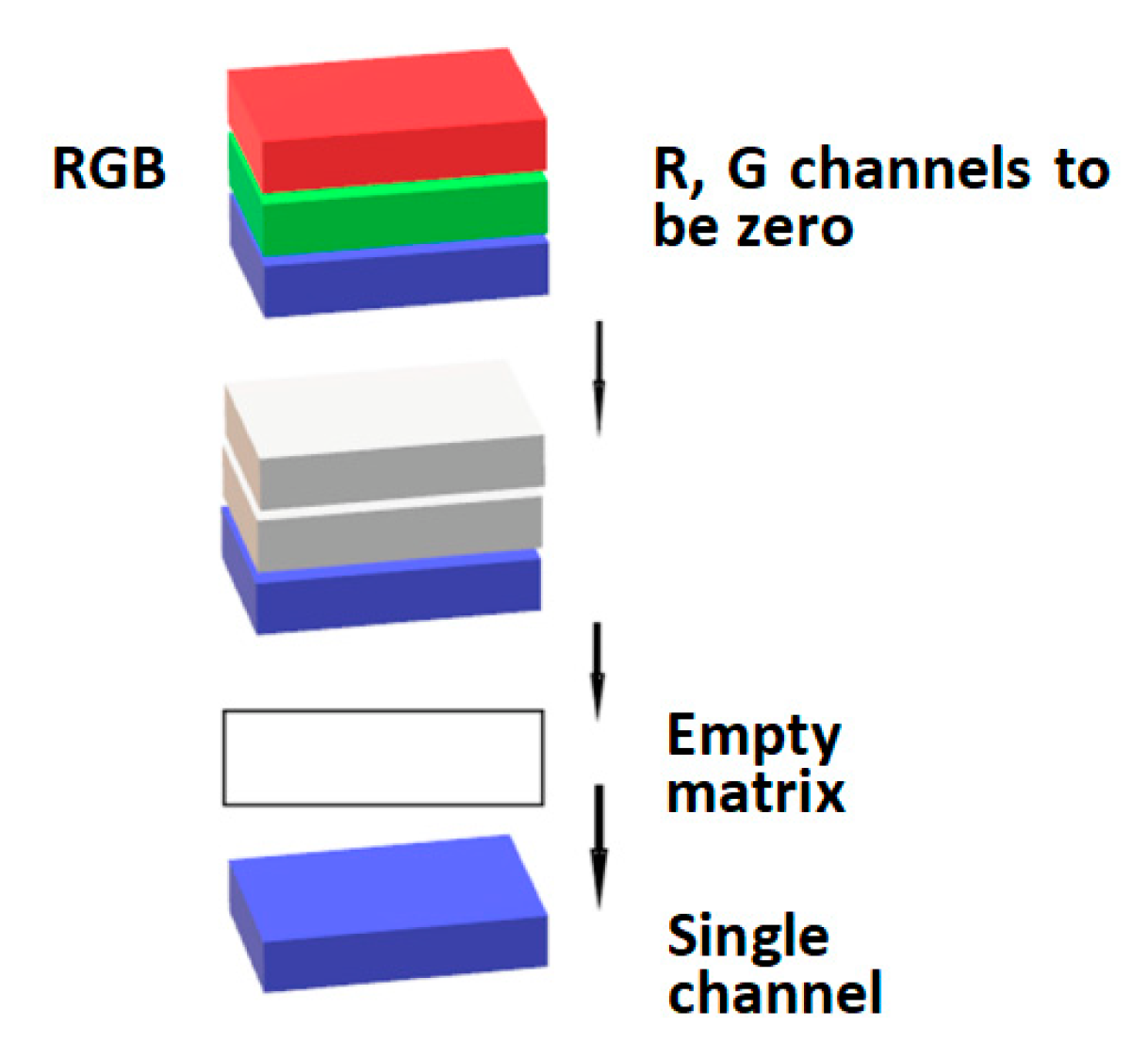
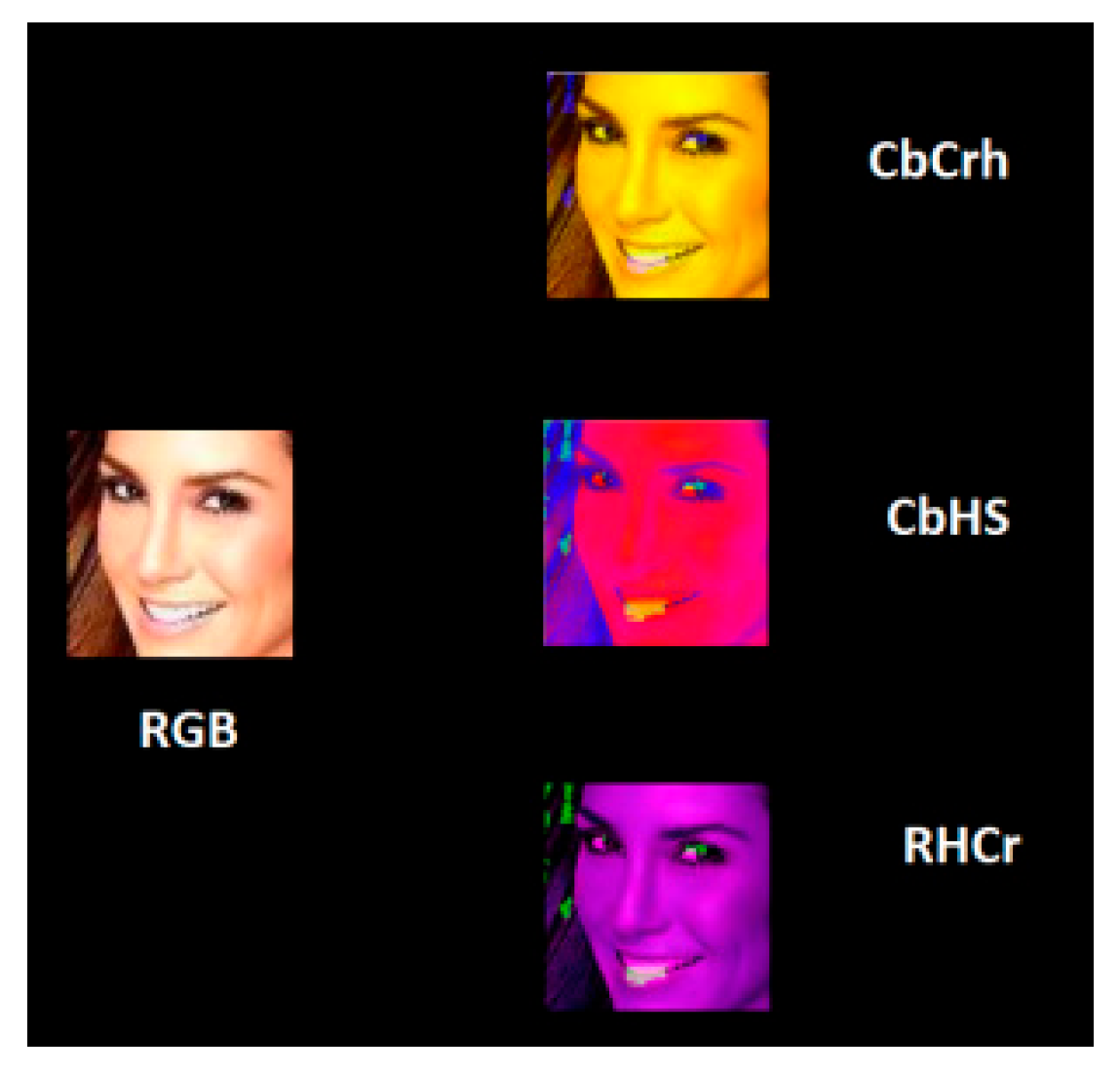
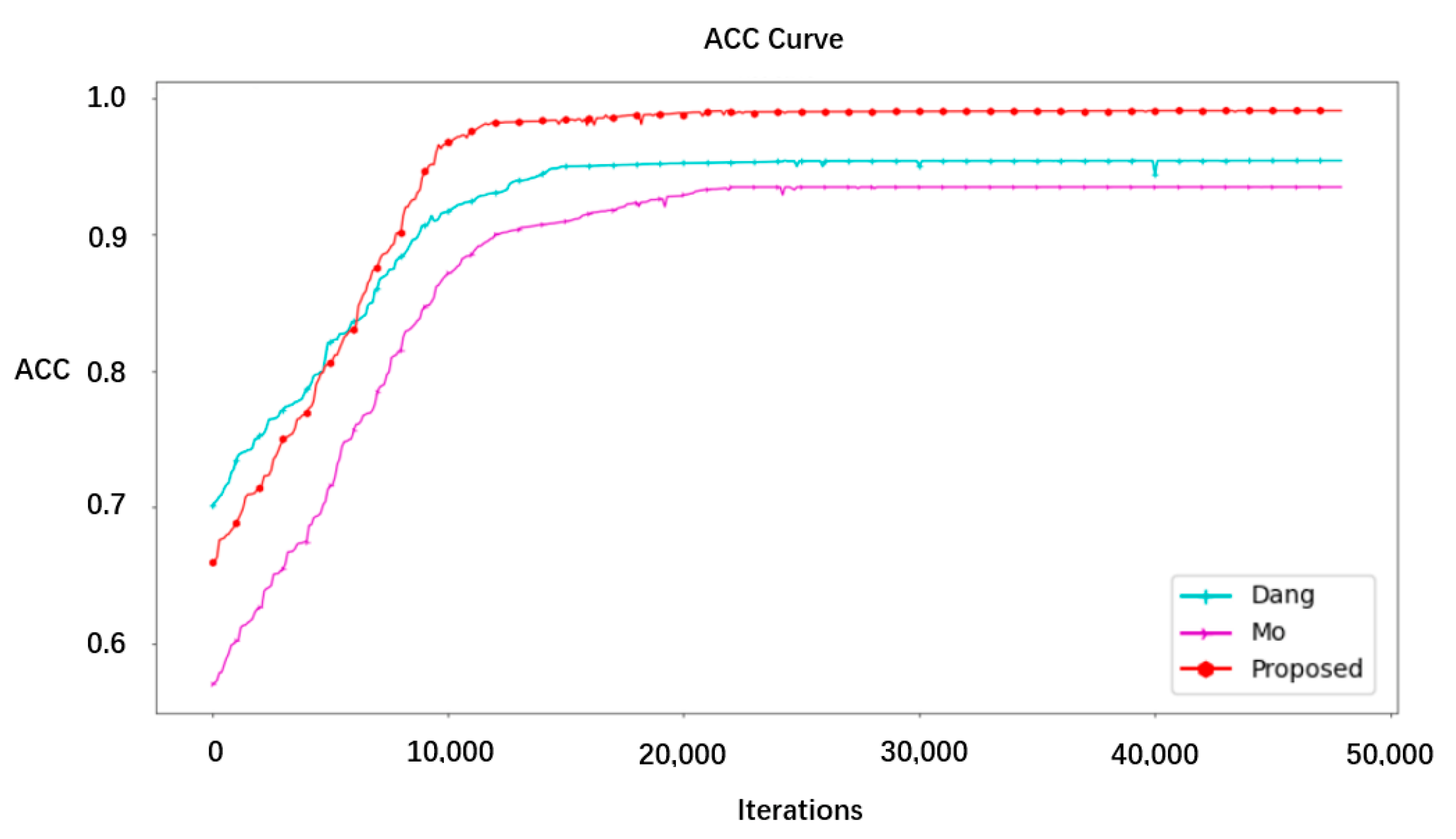
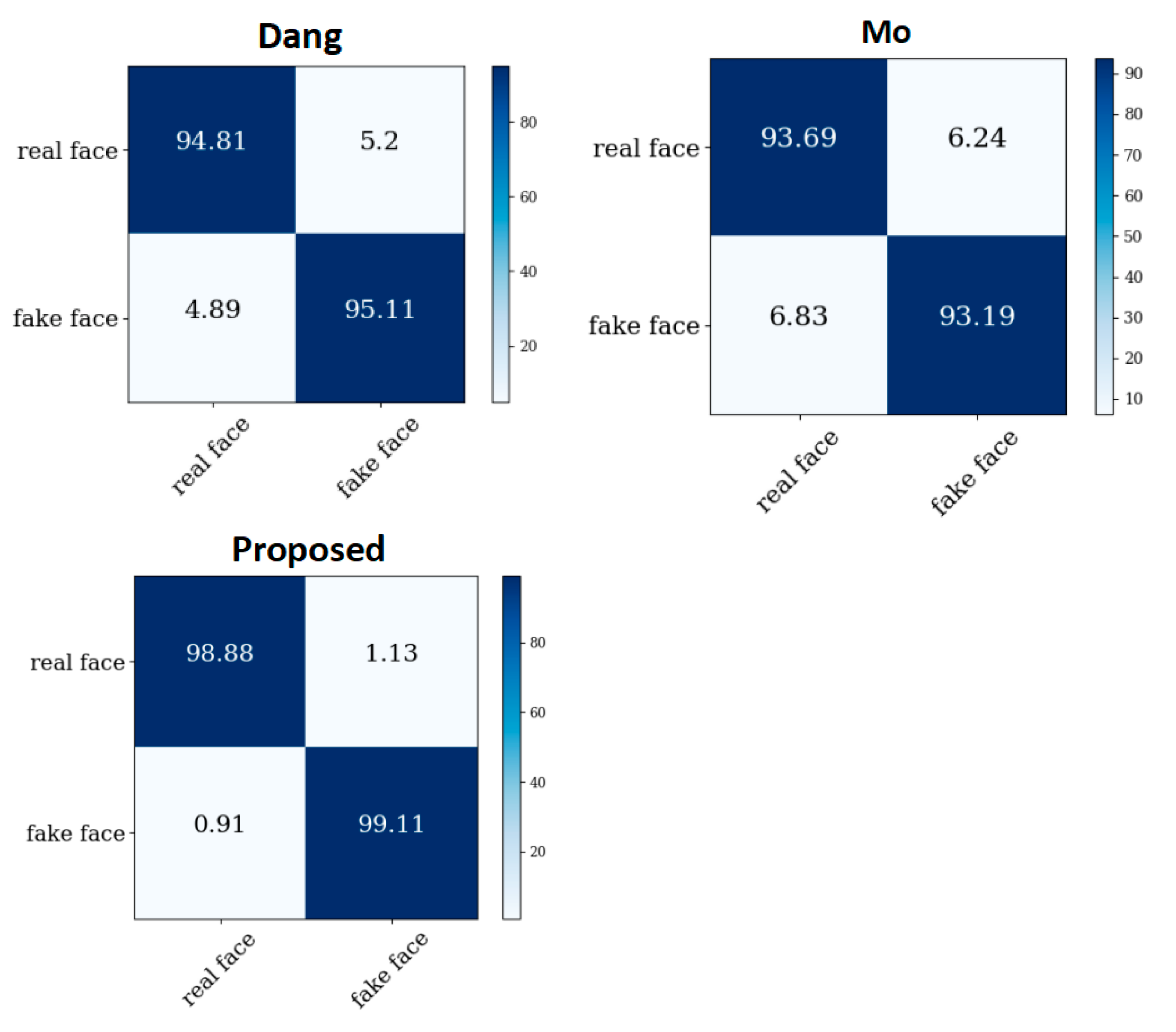
| Deep Learning Networks | Accuracy |
|---|---|
| Xception | 94.46% |
| ResNet152 | 91.74 |
| VGG-19 | 92.32 |
| AlexNet | 87.95% |
| Network Depth | Accuracy Improvement |
|---|---|
| Entry flow | 96.82% |
| Middle flow | 89.42% |
| Exit flow | 91.74% |
| Channel Recombination | Test Set Accuracy |
|---|---|
| H, S, Cb | 97.32% |
| H, S, Cr | 96.41% |
| H, Cb, Cr | 95.79% |
| Cb, Cr, H | 95.70% |
| Cb, Cr, S | 95.43% |
| HSV | 95.37% |
| YCbCr | 95.32% |
| RGB | 94.46% |
| The Above Two Methods | Test Set Accuracy |
|---|---|
| H, S, Cb | 99.10% |
| Model | GS128 | GD128 | GP128 | GD64 | GS64 | GP64 | Average |
|---|---|---|---|---|---|---|---|
| Mo | 93.50% | 90.32% | 91.73% | 86.52% | 84.39% | 80.21% | 87.78% |
| Dang | 95.43% | 92.18% | 96.37% | 90.62% | 80.24% | 90.24% | 90.85% |
| Proposed | 99.10% | 98.82% | 99.05% | 95.78% | 90.32% | 93.78% | 96.14% |
| 70 | 80 | 90 | 100 | |
|---|---|---|---|---|
| Dang | 81.69% | 90.34% | 91.35% | 93.54% |
| Mo | 76.42% | 79.95% | 85.23% | 90.21% |
| Proposed | 85.38% | 93.79% | 97.64% | 98.71% |
Publisher’s Note: MDPI stays neutral with regard to jurisdictional claims in published maps and institutional affiliations. |
© 2022 by the authors. Licensee MDPI, Basel, Switzerland. This article is an open access article distributed under the terms and conditions of the Creative Commons Attribution (CC BY) license (https://creativecommons.org/licenses/by/4.0/).
Share and Cite
Mo, S.; Lu, P.; Liu, X. AI-Generated Face Image Identification with Different Color Space Channel Combinations. Sensors 2022, 22, 8228. https://doi.org/10.3390/s22218228
Mo S, Lu P, Liu X. AI-Generated Face Image Identification with Different Color Space Channel Combinations. Sensors. 2022; 22(21):8228. https://doi.org/10.3390/s22218228
Chicago/Turabian StyleMo, Songwen, Pei Lu, and Xiaoyong Liu. 2022. "AI-Generated Face Image Identification with Different Color Space Channel Combinations" Sensors 22, no. 21: 8228. https://doi.org/10.3390/s22218228
APA StyleMo, S., Lu, P., & Liu, X. (2022). AI-Generated Face Image Identification with Different Color Space Channel Combinations. Sensors, 22(21), 8228. https://doi.org/10.3390/s22218228





